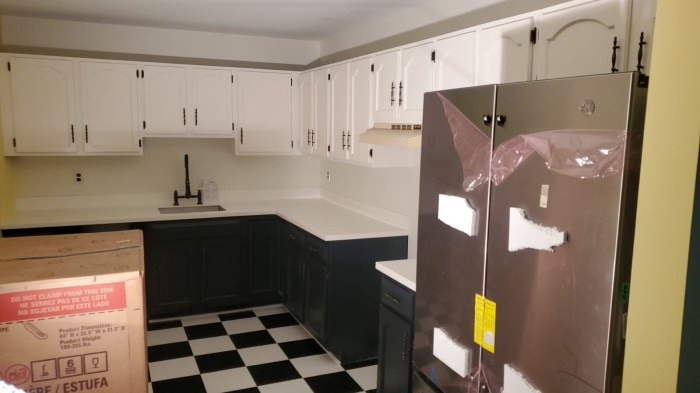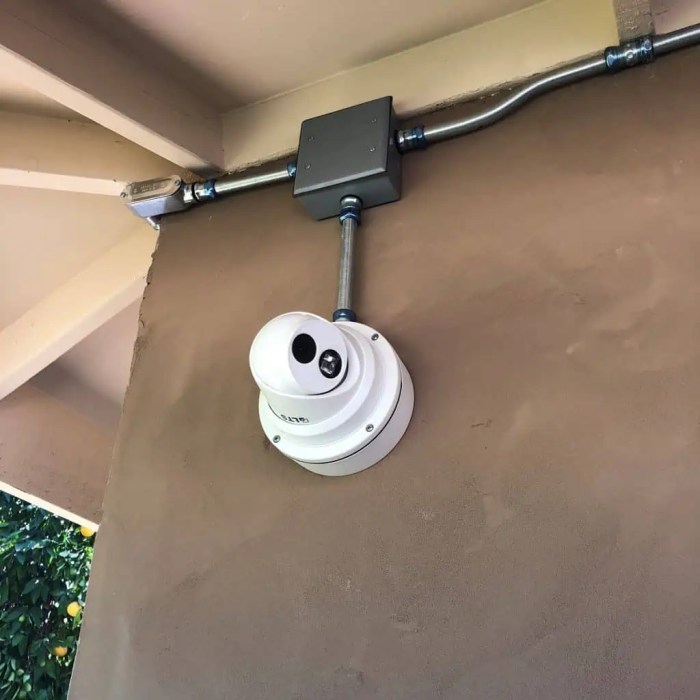Exploring the Essence of Scandinavian Interior Design
Embark on a journey through the world of Scandinavian interior design, a style that embodies simplicity, functionality, and coziness. Delve into the rich history and key elements that define this design aesthetic, shaped by cultural influences over the years.
Uncover the beauty of minimalist aesthetics, the significance of natural light, and the use of textures and colors to create a warm and inviting atmosphere in Scandinavian interiors.
Origins of Scandinavian Interior Design
Scandinavian interior design has its roots in the early 20th century, emerging as a response to the harsh Nordic climate and a desire for functional yet beautiful living spaces. The design movement began in the Scandinavian countries of Denmark, Norway, Sweden, Finland, and Iceland, characterized by simplicity, minimalism, and functionality.
Key Elements of Scandinavian Interior Design
- Natural Materials: Wood, stone, and other natural materials are prominent in Scandinavian design, bringing warmth and texture to spaces.
- Light and Airy Spaces: Scandinavian interiors are known for their light color palettes, plenty of natural light, and open, airy layouts.
- Functional Furniture: Furniture in Scandinavian design is often sleek, simple, and multipurpose, focusing on practicality without sacrificing style.
- Hygge: A concept central to Scandinavian design, hygge embodies coziness, comfort, and a sense of well-being in the home.
Cultural Influences on Scandinavian Interior Design
Scandinavian interior design is heavily influenced by the region's cultural values, such as a deep connection to nature, a focus on equality and social welfare, and a respect for craftsmanship. These values are reflected in the clean lines, organic shapes, and sustainable practices often found in Scandinavian design.
Additionally, the long winter months in the Nordic countries have led to a design aesthetic that prioritizes creating warm, inviting spaces that promote relaxation and comfort.
Key Features of Scandinavian Interior Design
Scandinavian interior design is known for its minimalist aesthetics, emphasis on natural light, and use of neutral colors and textures to create a cozy atmosphere.
Minimalist Aesthetics
Scandinavian design embraces simplicity, clean lines, and functionality. Clutter is minimized, and every piece of furniture or decor serves a purpose. This minimalist approach creates a sense of calm and openness in the space.
Importance of Natural Light
Natural light is a key element in Scandinavian interiors. Large windows are common, allowing daylight to flood the room and create a bright, airy feel. This connection to the outdoors brings a sense of nature inside, enhancing the overall ambiance of the space.
Neutral Colors and Textures
Neutral colors like whites, grays, and soft pastels dominate Scandinavian interiors. These hues help to reflect light and make the space feel more spacious. Textures such as cozy wool, natural wood, and soft textiles add warmth and depth to the design, creating a welcoming and comfortable environment.
Materials and Textures in Scandinavian Interior Design
Scandinavian interior design is known for its emphasis on natural materials and textures that bring warmth and coziness to spaces. The use of materials like wood, leather, and wool play a significant role in creating the signature Scandinavian look.
Natural Materials: Wood, Leather, and Wool
In Scandinavian interior design, wood is a staple material used for furniture, flooring, and accents. Its natural grain and warmth add a sense of comfort to the space. Leather is often seen in furniture pieces, providing a touch of luxury and durability.
Wool, whether in the form of rugs, blankets, or pillows, adds texture and softness to the room.
Textures: Fur, Knits, and Sheepskins
Textures like fur, knits, and sheepskins are commonly used in Scandinavian interiors to enhance the tactile experience. Faux fur throws or cushions add a plush and cozy element to seating areas. Knitted blankets or poufs bring a handmade touch and visual interest.
Sheepskins draped over chairs or benches create a soft and inviting feel.
Role of Tactile Elements
The use of tactile elements in Scandinavian interior design goes beyond aesthetics. By incorporating different textures like wood, leather, wool, fur, knits, and sheepskins, spaces feel more inviting and comfortable. These elements not only add visual interest but also engage the sense of touch, making the room feel warm and welcoming.
Furniture and Layout in Scandinavian Interior Design
In Scandinavian interior design, furniture plays a crucial role in achieving a functional and simple aesthetic. The design principles behind Scandinavian furniture focus on clean lines, minimalist shapes, and practicality.
Functional and Simple Furniture
Scandinavian furniture is known for its functionality and simplicity. Pieces are designed to be practical and efficient, with a focus on usability. Clean lines and minimal ornamentation are key features, creating a sense of understated elegance in the space.
- Functional Design: Scandinavian furniture is designed to serve a purpose, with no unnecessary frills or embellishments. Each piece is carefully crafted to maximize usability and efficiency in the home.
- Simple Aesthetics: The design of Scandinavian furniture is characterized by clean lines, smooth surfaces, and neutral colors. This simplicity allows the furniture to blend seamlessly into the overall design of the room.
- Practicality: Scandinavian furniture is not only aesthetically pleasing but also highly practical. Pieces often feature storage solutions or multi-functional elements to help maintain a clutter-free and organized space.
Layout and Organization of Spaces
In Scandinavian interiors, the layout and organization of spaces are carefully planned to create a sense of harmony and balance. Rooms are designed with functionality in mind, prioritizing comfort and ease of movement.
- Open Floor Plans: Scandinavian interiors often feature open floor plans that allow for a seamless flow between spaces. This layout helps to maximize natural light and create a sense of airiness in the home.
- Zoning: Spaces in Scandinavian interiors are often divided into zones based on function, such as living, dining, and sleeping areas. Each zone is carefully organized to ensure practicality and efficiency in daily activities.
- Minimalist Approach: The layout of Scandinavian interiors follows a minimalist approach, with furniture placement kept simple and clutter-free. This minimalist design helps to create a sense of calm and tranquility in the space.
Decor and Accessories in Scandinavian Interior Design
Scandinavian interior design is known for its minimalistic and functional approach, but that doesn't mean it lacks in warmth and coziness. Decor and accessories play a vital role in adding personality and charm to a Scandinavian-inspired space.
Use of Functional and Decorative Items
In Scandinavian interior design, functional items are often used as decorative pieces. Items like candles, plants, and textiles not only serve a purpose but also add a touch of nature and texture to the space. Candles are commonly used to create a cozy atmosphere, while plants bring in a sense of freshness and life.
Textiles such as throws, rugs, and cushions provide warmth and softness to the room.
The Concept of “Hygge”
"Hygge" is a Danish term that encapsulates the feeling of coziness, contentment, and well-being. In Scandinavian decor, incorporating elements of "hygge" is essential to creating a welcoming and comfortable environment. This can be achieved through soft lighting, natural materials, and cozy textures that invite relaxation and intimacy.
Incorporating Personal Touches
While Scandinavian interior design is known for its minimalism, it doesn't mean you can't infuse your personality into the space. Adding personal touches like family photos, artwork, or unique decor items can help create a sense of individuality without cluttering the space.
The key is to strike a balance between simplicity and personalization, ensuring that the space remains uncluttered and harmonious.
Colors and Lighting in Scandinavian Interior Design

Scandinavian interior design is known for its preference for light, airy colors and strategic use of lighting to create a sense of spaciousness and enhance the mood and ambiance of a space.
Light, Airy Colors
In Scandinavian interior design, light, airy colors such as whites, grays, and pale blues are commonly used on walls, furniture, and decor. These colors help to reflect light and create a bright, open feel in the space. The use of neutral colors also allows for easy coordination with different textures and materials.
Strategic Use of Lighting
Lighting plays a crucial role in Scandinavian interior design, with an emphasis on natural light whenever possible. Large windows, sheer curtains, and minimal window treatments are often used to maximize the entry of natural light. In addition to natural light, Scandinavian interiors often feature a mix of ambient, task, and accent lighting to create different moods and highlight key design elements.
Creating a Sense of Spaciousness
The combination of light, airy colors and strategic lighting techniques in Scandinavian interior design helps to create a sense of spaciousness even in smaller spaces. By using light colors to reflect light and incorporating various lighting sources to eliminate dark corners, Scandinavian interiors feel open and inviting.
This emphasis on creating a bright and airy atmosphere contributes to the overall minimalist and functional aesthetic of Scandinavian design.
Last Recap
In conclusion, Scandinavian interior design offers a harmonious blend of form and function, inviting individuals to embrace a lifestyle of simplicity and comfort. With its focus on natural materials, minimalist decor, and cozy elements, this design style continues to captivate admirers worldwide.
FAQ Summary
What are the key elements of Scandinavian interior design?
The key elements include minimalist aesthetics, natural light, neutral colors, and cozy textures.
How important is the concept of "hygge" in Scandinavian decor?
"Hygge" plays a significant role in creating a warm and inviting atmosphere in Scandinavian interiors, emphasizing comfort and coziness.
What colors are commonly used in Scandinavian interior design?
Light, airy colors such as whites, grays, and pale blues are preferred to enhance the sense of spaciousness and brightness.




